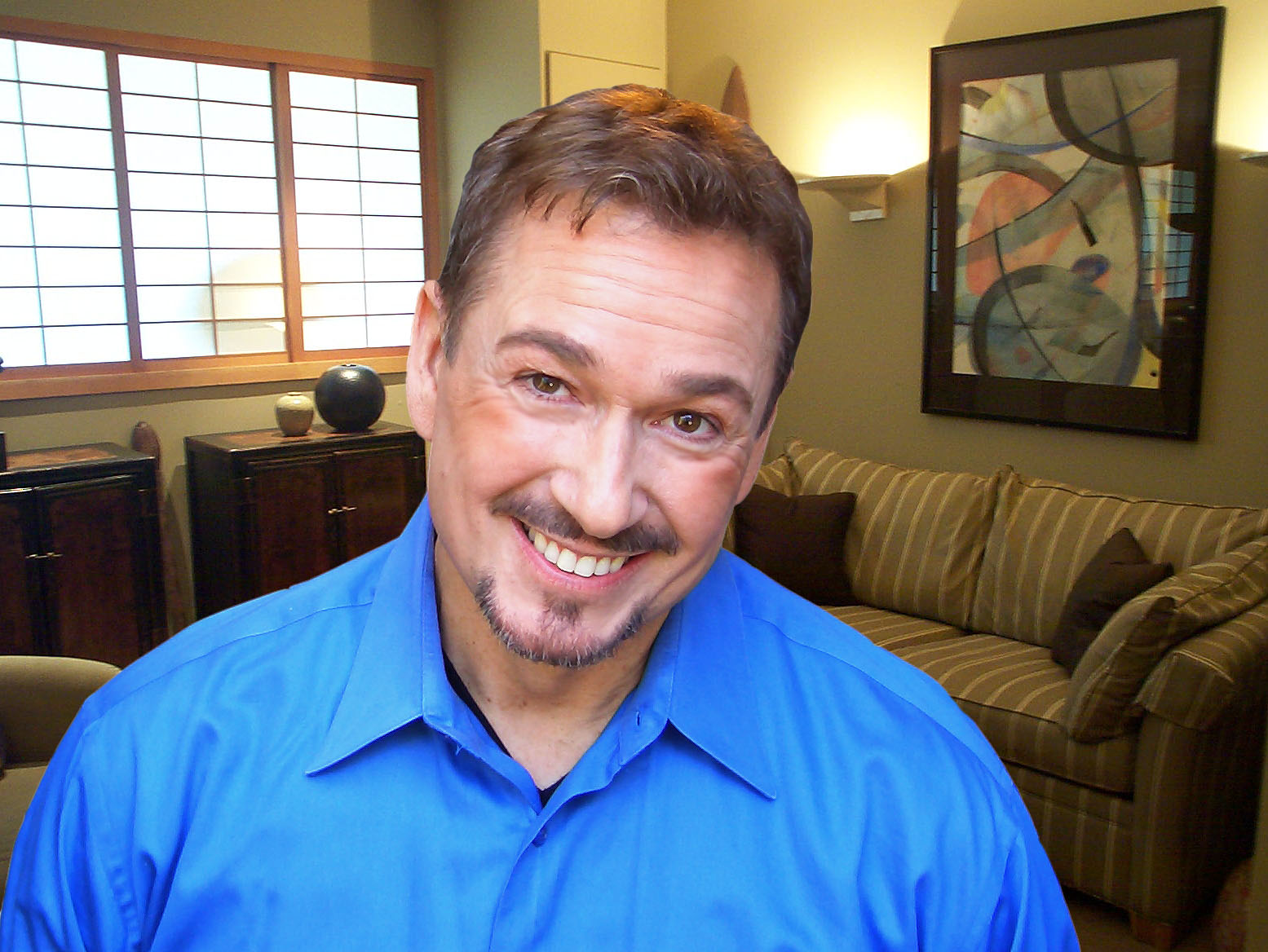CREATIVE HOME LIGHTING – IDEAS AND INSPIRATION
Your creative home living space is only as good as the light which illuminates it. That’s the philosophy of Randall Whitehead, an internationally known architectural lighting designer, based in San Francisco.
In addition to his work as a creative home lighting design expert, Randall is also a prolific author and enlightening and humorous speaker on the world of design. He’s a frequent contributor to Architectural Digest, Better Homes & Gardens and also appears regularly as a guest expert on the Discovery Channel, HGTV and Martha Stewart Living Radio. As a part of our ongoing creative home living series, we picked Randall’s brain how you can use light to add balance, drama and excitement to your own home.
Conscious Connection: What exactly is lighting design and when did you get started with all this?
Randall Whitehead: What I do as a lighting designer is to take interior & exterior spaces and paint them with light. In the beginning, I was doing a lighting design for local theater productions and cable television, but I thought I was going to be a professional photographer. When I moved from the East Coast to California I got a job as an assistant to a photographer for Architectural Digest. He also happened to be one of the first lighting designers. Seeing what techniques he was using, I started to see how my background in theatrical lighting could be applied to architectural projects.
When it was time for me to go out on my own, I had to choose between photography and lighting. I opened up the phone book (this is what we used before Yelp) and saw that there were more than 1,200 photographers listed in the San Francisco Bay Area. Under the heading of ‘lighting designer’ there were only three. I felt that the odds were more in my favor to go into lighting. This is a decision I’ve never regretted, although it didn’t close the door on photography either. In fact, I have a recent book out on my photography called Lost Dolls, The hidden lives of toys.
Conscious Connection: So what exactly does lighting do for design?
Randall Whitehead: My job as a lighting designer is to make three things look great at night: architecture, interior design and people. Of those three things, it is the illumination of the people is at the top the list. Whether it is a residence or restaurant, people want to look their very best. Why shouldn’t people be the stars of their own homes? My goal is to reduce shadowing so that everyone looks young and rested. Bad lighting can be harsh and aging. Who wants that? I like to think of effectively done lighting as an environmental face-lift.
Conscious Connection: How can lighting design create drama in a room?
Randall Whitehead: The technique is called light layering. This is where we use four different types of lighting: task, decorative, accent and ambient, to create a cohesive design. Each of these has a different function:
- Task lighting is a light by which you do work. This can be the lighting installed under the overhead cabinets in the kitchen, inside the closet or on either side of the mirror for applying makeup and shaving.
- Decorative lighting is what we all grew up with and know. This includes the chandelier over the dining room table or in the entry, as well as table lamps and floor lamps. If these are too bright, then they visually overpower space. We want to do is create the illusion that this is where the lights coming from, while in reality it is hidden light sources that are doing most of the work. I like to think of decorative lighting as architectural jewelry.
- Accent lighting is used to highlight objects in space, such as art, sculpture, table tops and plantings. It adds dimension and drama to a space, but if it is the only source of illumination then you create what is called the museum effect, where what you own appears to be more important than family and friends.
- Ambient lighting is the most important element, yet it is often left out of the job completely. This is indirect lighting that is bounced off of the ceiling to create a warm and inviting environment, while softening the shadows on people’s faces. Like the other types of lighting, if used by itself creates what I call the cloudy day effect, where everything is illuminated in a flat, even light.
It is when you successfully layer these different types of lighting together that you create drama for the room. Now you don’t want a room to be dramatic all the time, there are occasions when you want usable light for working or preparing meals. A really good lighting design is flexible, offering various levels of illumination to meet a particular need.
Conscious Connection: Tell me more about how effective outdoor lighting should work.
Randall Whitehead: Exterior lighting has become very popular. People are beginning to realize that for a modest investment they can create outdoor rooms, expanding their entertaining areas without enlarging the size of their homes.
Well-done lighting at the front of the house creates a sense of welcome. Often people think that by increasing the wattage of the bulbs in their exterior decorative fixtures will provide more light. The reality is that they’re actually just creating more glare. Those two lanterns flanking the front door, as well as the pole lamp down at the end of the driveway, should be incorporated into the design, just as they are inside the home. Using low wattage bulbs allows them to be part of the design instead of overwhelming it.
The most effective outdoor lighting leads people safely and subtly through the landscaping, providing points of interest along the way. We use a cooler color of light to illuminate plants. This enhances colors and it helps the foliage look lush and green.
Conscious Connection: What are some lighting design challenges you face regularly?
Randall Whitehead: For the most part people simply accept lighting; they don’t realize that they have control over it. Homeowners can end up living with bad lighting for many years. Glaring light can cause headaches and low light levels can cause eyestrain. The challenge is that people can be resistant to the idea of upgrading their lighting, but once they get over that hump they find that they can live in a more vibrant and positive environment.
The other challenge is that the market has been flooded with a huge amount of new high efficacy products which can be confusing and overwhelming to buyers. If the wrong product or a subpar product is selected it can turn someone off to the idea of changing over their lighting. I’m afraid that the inferior lighting products on the market will sour the general public on energy efficient lighting. I test many products all the time, installing them in my own home. Those that I feel do a good job at a good price are the ones I will recommend to my clients.
Conscious Connection: Where do you see the future of lighting heading?
Randall Whitehead: I do believe that energy efficient lighting is going to be a big part of the future of lighting. As our energy costs become higher and our natural resources become fewer, people will start seeing the value in something that saves the money and is good for the environment.
I’m not anti-incandescent by any means. It is a beautiful warm color of illumination that reminds us of fire and candlelight. When LEDs came on the market in a big way five years ago, the color of the light was too green. The color was also inconsistent. Now there are much better colors from which to choose. Incandescent lighting will not disappear completely; manufacturers are working hard to create incandescent bulbs that meet the efficacy requirements set up by the US government.
LED manufacturers will tell you right on the box what the light color quality is, measured in degrees of Kelvin (°K). A household incandescent bulb is 2700° Kelvin, a halogen bulb is 3000° Kelvin, and a dimmed incandescent bulb is 2200° Kelvin. If people are looking for a warm inviting light then they should pick something out that is in the 2700° to 2200° Kelvin. Most of the bulbs I buy for my house are in the 2200° Kelvin range because I love that rich amber color.
Another thing that I’m seeing in development is the creation of LED sources that get appear to get warmer in color when dimmed. LEDs normally only reduce their light output when dimmed; they do not get warmer. Manufacturers are now working on bulbs, recessed fixtures and linear strip lights that in order to create the illusion of getting warmer when dimmed use a combination of both higher Kelvin temperature and lower Kelvin temperature diodes within the fixture that turn off in sequence. Once this becomes common practice and readily available, I predict we will see a widening acceptance of alternative light sources.





